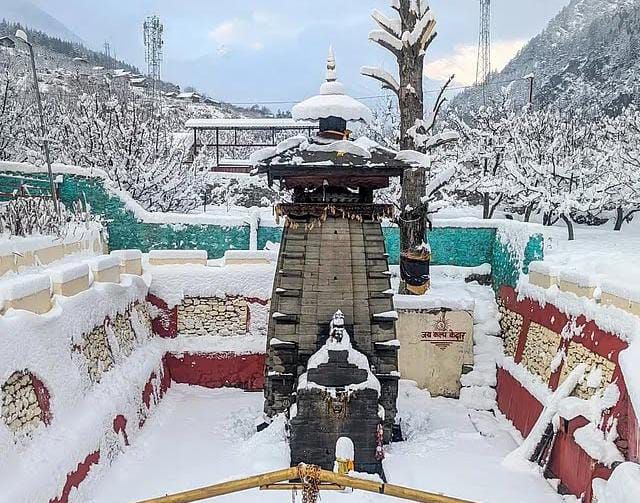
In early August 2025, a devastating flash flood struck Uttarkashi in Uttarakhand, sweeping away homes, orchards, and centuries of heritage. Among the many losses was Kalp Kedar, an ancient Shiva temple near Dharali in the Gangotri valley, revered as a relic from the Pandava era. Once marked by its intricately carved dome, the shrine now lies buried beneath mud, rock, and debris — leaving behind only memories and legends.
A Disaster That Changed the Landscape
The floodwaters of the Kheer Gad (Kheer Ganga) stream surged through Dharali, roughly six kilometres from Harsil, destroying much of the settlement. Triggered by heavy rains, possibly from a cloudburst or a glacial lake outburst, the catastrophe was compounded by landslides and broken bridges, cutting off rescue efforts. Entire families were displaced, lives were lost, and with them, the last visible remnant of Kalp Kedar vanished beneath the earth.
For years, the temple’s carved dome stood as the only sign of a sanctum believed to rest underground. Its disappearance has effectively erased the physical presence of a shrine once deeply rooted in local devotion.
More Than a Temple
To the people of Dharali and the Gangotri valley, Kalp Kedar was not just stone and mortar. It served as a centre of community life, spiritual continuity, and pilgrimage. Devotees visiting Gangotri or the Panch Kedar shrines often included Kalp Kedar in their journey, especially during the month of Shrawan, when rituals drew steady streams of worshippers. Its loss is mourned not only as the destruction of heritage but also as the severing of a sacred bond between people, faith, and place.
A Fragile Legacy in a Changing Climate
The vanishing of Kalp Kedar underscores the growing vulnerability of Himalayan heritage. Climate change has intensified glacial instability and erratic monsoon patterns, putting both cultural landmarks and human settlements at risk. Temples like Kalp Kedar, rooted in legend and natural landscapes, stand as fragile guardians of history — easily undone by nature’s fury.
Whether Kalp Kedar will ever be unearthed again remains uncertain. For now, it lives on in the collective memory of villagers, in the oral traditions that link it to the Pandavas, and in the hearts of devotees who once sought blessings at its hidden sanctum. Its disappearance is not merely a loss of architecture but a reminder of how fleeting and vulnerable even the most sacred heritage can be.
